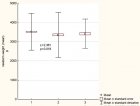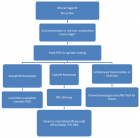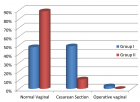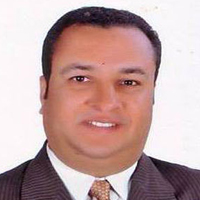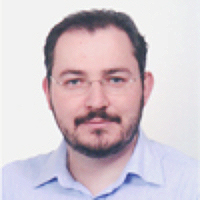Abstract
Research Article
Empirical formulae for calculating γ-ray detectors effective solid angle ratio
Mohamed. S. Badawi*, Ahmed M El Khatib, Mohamed A Elzaher, Mona M Gouda, Abouzeid A Thabet, Mahmoud I Abbas and Kholud S Almugren
Published: 27 January, 2017 | Volume 1 - Issue 1 | Pages: 012-021
Determination of the detector efficiency using volumetric cylindrical sources is very important in various scientific and industrial fields, especially in the field of quantitative analysis. To calculate the absolute activity of any sample, the full-energy peak efficiency (FEPE) of the detector is needed. By applying the efficiency transfer method, the FEPE of the detector would be determined easily without using the standard sources. This approach depends on two main factors. The first one, is the reference efficiency of the reference source, which is determined experimentally, and the second one, is the calculation of the effective solid angle ratio between the sample and the reference source geometries. This work introduces an empirical formula for calculating the second factor for using two different sizes of NaI(Tl) detectors. The validity of this empirical formula was successfully demonstrated by comparing the calculating values with the experimental values.
Read Full Article HTML DOI: 10.29328/journal.jro.1001002 Cite this Article Read Full Article PDF
Keywords:
NaI (Tl) detector; Effective solid angle ratio; Full-Energy peak efficiency
References
- Debertin K, Helmer RG. Gamma- and X-ray spectrometry with semiconductor detectors. North-Holland. 1988; New York. Ref.: https://goo.gl/fHfUb8
- Lippert J. Detector-efficiency calculation based on point-source measurement. Int J Appl Radiat Isot. 1983; 34: 1097-1103. Ref.: https://goo.gl/wOQveD
- Moens L, Hoste J. Calculation of the peak efficiency of high-purity germanium detectors. Int J Appl Radiat Isot. 1983; 34: 1085-1095. Ref.: https://goo.gl/j3IxZv
- Haase G, Tait D, Wiechon A. Application of new monte carl method for determination of summation and self-attenuation corrections in gamma spectrometry. Nucl Instrum Methods. 1993; A336: 206-214. Ref.: https://goo.gl/x4tnng
- Wang TK, Mar WY, Ying TH, Liao CH, Tseng CL, et al. HPGe detector absolute-peak-efficiency calibration by using the ESOLAN program. Appl Radiat Isot. 1995; 46: 933-944. Ref.: https://goo.gl/Lgl3lc
- Wang TK, Mar WY, Ying TH, Tseng CH, Liao CH, et al. HPGe Detector efficiency calibration for extended cylinder and Marinelli- beaker sources using the ESOLAN program. Appl Radiat Isot. 1997; 48: 83-95. Ref.: https://goo.gl/dQNx77
- Lépy MC, Altzitzoglou T, Arnold D, Bronson F, Capote Noye R, et al. Intercomparison of efficiency transfer software for gamma-ray spectrometry. Appl Radiat Isot. 2001; 55: 493-503. Ref.: https://goo.gl/WfSS3v
- Vidmar T, Aubineau Laniece I, Anagnostakis MJ, et al. An intercomparison of monte carlo codes used in gamma-ray spectrometry. Appl Radiat Isot. 2008; 66: 764-768. Ref.: https://goo.gl/e35Sd8
- Badawi MS, El-Khatib AM, Krar ME. New numerical simulation approach to calibrate the NaI(Tl) detectors array using non-axial extended spherical sources. Journal of Instrumentation. 2013; 8: 11. Ref.: https://goo.gl/ut1p4i
- Badawi MS, Krar ME, El-Khatib AM, Jovanovic SI, Dlabac AD, et al. A new mathematical model for determining the full energy peak efficiency (FEPE) for an array of two γ-detectors counting rectangular parallelepiped source. Nuclear Technology & Radiation Protection Journal. 2013; 28: 370-380. Ref.: https://goo.gl/LYmnac
- Badawi MS, Elzaher MA, Thabet AA, El-khatib AM. An empirical formula to calculate the full energy peak efficiency of scintillation detectors. Appl Radiat Isot. 2013; 74: 46-49. Ref.: https://goo.gl/V5PDsr
- Abbas MI. A direct mathematical method to calculate the efficiencies of a parallelepiped detector for an arbitrarily positioned point source. Radiat Phys Chem. 2001a; 60: 3-9. Ref.: https://goo.gl/JypVh5
- Abbas MI. Analytical formulae for well-type NaI(Tl) and HPGe detectors efficiency computation. Appl Radiat Isot. 2001b; 55: 245-252. Ref.: https://goo.gl/hLQSKd
- Abbas MI, SelimYS. Calculation of relative full-energy peak efficiencies of well-type detectors. Nucl Instrum Methods A. 2002; 480: 651-657. Ref.: https://goo.gl/9AMrXx
- Abbas MI. HPGe detector absolute full-energy peak efficiency calibration including coincidence correction for circular disc sources. J Phys D Appl Phys. 2006; 39: 3952-3958. Ref.: https://goo.gl/89DOYb
- Abbas MI, Nafee SS, Selim YS. Calibration of cylindrical detectors using a simplified theoretical approach. Appl Radiat Isot. 2006; 64: 1057-1064. Ref.: https://goo.gl/M4DM6l
- Debertin K, Schotzig U. Coincidence summing corrections in Ge(Li)-spectrometry at low source-to-detector distances. Nucl Instrum Meth A. 1979; 158: 471-477. Ref.: https://goo.gl/CJ5NGn
- El-Khatib AM, Thabet AA, Elzaher MA, Badawi MS, Salem BA. Study on the effect of the, self-attenuation coefficient on γ-ray detector efficiency calculated at low and high energy regions. Journal of Nuclear Engineering and Technology. 2014; 46: 217-224. Ref.: https://goo.gl/wpoBxI
- El-Khatib AM, Badawi MS, Elzaher MA, Thabet AA. Calculation of the peak efficiency for NaI(Tl) gamma ray detector using the effective solid angle method. Journal of Advanced Research in Physics. 2012; 3: 021204. Ref.: https://goo.gl/bqKYOW
Figures:
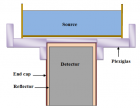
Figure 1
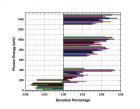
Figure 2
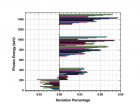
Figure 3
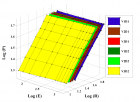
Figure 4
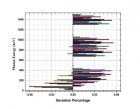
Figure 5
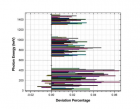
Figure 6
Similar Articles
-
Empirical formulae for calculating γ-ray detectors effective solid angle ratioMohamed. S. Badawi*,Ahmed M El Khatib,Mohamed A Elzaher,Mona M Gouda,Abouzeid A Thabet,Mahmoud I Abbas,Kholud S Almugren. Empirical formulae for calculating γ-ray detectors effective solid angle ratio. . 2017 doi: 10.29328/journal.jro.1001002; 1: 012-021
Recently Viewed
-
Assessment of knowledge on breast self-examination among female adolescent: a cross-sectional studyPooja Prakash,Shanti Khadka,Muna Silwal,Ayush Chandra*. Assessment of knowledge on breast self-examination among female adolescent: a cross-sectional study. Clin J Obstet Gynecol. 2022: doi: 10.29328/journal.cjog.1001104; 5: 036-041
-
Addition of dydrogesterone to vaginal progesterone and transfer postponement improve outcomes in patients with low progesterone levels in hormonally substituted cycles for frozen-thawed embryo transferAnne Lecourt,Julie Labrosse,Maeliss Peigné,Claire Vinolas,Laetitia Laup,Christophe Sifer,Michael Grynberg,Isabelle Cedrin-Durnerin*. Addition of dydrogesterone to vaginal progesterone and transfer postponement improve outcomes in patients with low progesterone levels in hormonally substituted cycles for frozen-thawed embryo transfer. Clin J Obstet Gynecol. 2022: doi: 10.29328/journal.cjog.1001103; 5: 027-035
-
Research of Potential Production 94mTc in Medical CyclotronGerman KE*, Rumyantsev AS, Manukova VA. Research of Potential Production 94mTc in Medical Cyclotron. J Clin Intensive Care Med. 2024: doi: 10.29328/journal.jcicm.1001050; 9: 027-030
-
Cessation of Menstruation during Pregnancy: OverviewValery Rapovets*. Cessation of Menstruation during Pregnancy: Overview. Clin J Obstet Gynecol. 2024: doi: 10.29328/journal.cjog.1001172; 7: 100-102
-
An Appraisal of Recurrent Miscarriage in Sub-Saharan Africa: Occurrence and Possible SolutionSanmi Emiade*, Bolanle OP Musa, Adekunle O Oguntayo, Abduazeez Hassan, Yemi Balogun. An Appraisal of Recurrent Miscarriage in Sub-Saharan Africa: Occurrence and Possible Solution. Clin J Obstet Gynecol. 2024: doi: 10.29328/journal.cjog.1001173; 7: 103-106
Most Viewed
-
Evaluation of Biostimulants Based on Recovered Protein Hydrolysates from Animal By-products as Plant Growth EnhancersH Pérez-Aguilar*, M Lacruz-Asaro, F Arán-Ais. Evaluation of Biostimulants Based on Recovered Protein Hydrolysates from Animal By-products as Plant Growth Enhancers. J Plant Sci Phytopathol. 2023 doi: 10.29328/journal.jpsp.1001104; 7: 042-047
-
Sinonasal Myxoma Extending into the Orbit in a 4-Year Old: A Case PresentationJulian A Purrinos*, Ramzi Younis. Sinonasal Myxoma Extending into the Orbit in a 4-Year Old: A Case Presentation. Arch Case Rep. 2024 doi: 10.29328/journal.acr.1001099; 8: 075-077
-
Feasibility study of magnetic sensing for detecting single-neuron action potentialsDenis Tonini,Kai Wu,Renata Saha,Jian-Ping Wang*. Feasibility study of magnetic sensing for detecting single-neuron action potentials. Ann Biomed Sci Eng. 2022 doi: 10.29328/journal.abse.1001018; 6: 019-029
-
Pediatric Dysgerminoma: Unveiling a Rare Ovarian TumorFaten Limaiem*, Khalil Saffar, Ahmed Halouani. Pediatric Dysgerminoma: Unveiling a Rare Ovarian Tumor. Arch Case Rep. 2024 doi: 10.29328/journal.acr.1001087; 8: 010-013
-
Physical activity can change the physiological and psychological circumstances during COVID-19 pandemic: A narrative reviewKhashayar Maroufi*. Physical activity can change the physiological and psychological circumstances during COVID-19 pandemic: A narrative review. J Sports Med Ther. 2021 doi: 10.29328/journal.jsmt.1001051; 6: 001-007

HSPI: We're glad you're here. Please click "create a new Query" if you are a new visitor to our website and need further information from us.
If you are already a member of our network and need to keep track of any developments regarding a question you have already submitted, click "take me to my Query."










